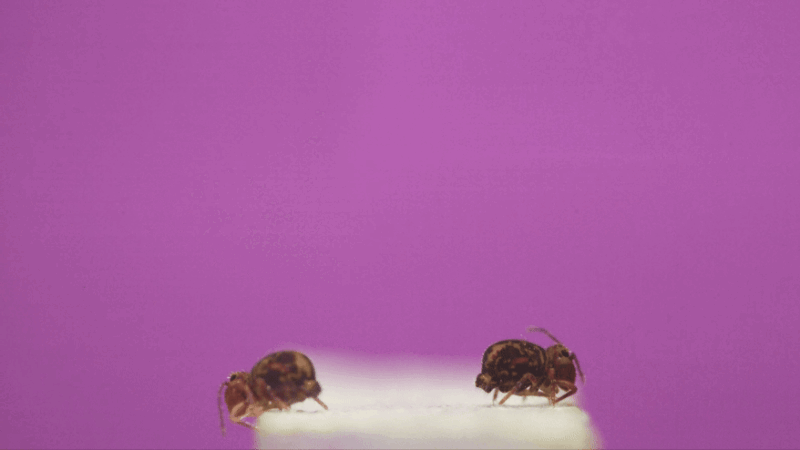Simone Biles has nothing on this tiny backflipper.
The globular springtail (Dicyrtomina minuta) is so small it could straddle the tip of a pencil. Yet this insect-like animal can vault itself 62 millimeters (2.4 inches) in the air, spinning backward at a rate of up to 368 times per second.
A jump lasts just 161 thousandths of a second, on average. Researchers reported the arthropod’s gymnastic feats August 29 in Integrative Organismal Biology.
“Nothing on Earth does a backflip faster than a globular springtail,” says Adrian Smith. He a biologist at North Carolina State University in Raleigh. “They’re extraordinary, but also ordinary.” In fact, the arthropods used in the new study, he says, “are literally from my backyard.”
Globular springtails jump so fast that they can appear to vanish, Smith says. This may be a useful skill for evading predators.
It took footage from a high-speed camera to reveal how globular springtails do their astounding acrobatics. The arthropods achieve liftoff with a spring-like body part, traveling as fast as 1.5 meters per second and spinning backwards up to 29 times before landing.
Smith paired up with biomechanist Jacob Harrison to learn how these animals do their acrobatic moves. Harrison works at Georgia Tech in Atlanta. The team analyzed high-speed footage of more than a dozen springtails as they flipped and spun.
Each launch begins with a thump. The springtail releases a fork-shaped body part called the furca (or furcula) from its underbelly. Like a spring, that furca propels the arthropod up and into a backward spin.
Globular springtails fly through the air as fast as 1.5 meters per second, on average, the new data show. And the number of spins per leap is equally impressive — anywhere between 14 and 29.
These flights don’t always have a pretty ending. Springtails sometimes crash land and tumble to a stop. But most times, these backflippers nail the landing, the team found. They do this by using a sticky tube normally used for grooming. “It’s a sort of anchor that pulls them to their feet so they can get on with their day,” Smith explains.
Smith hopes the team’s findings inspire more studies like theirs. “We sometimes get told that the only exciting parts of nature are fossilized in the ground or hidden in a tropical rainforest,” he says. Ordinary creatures like the springtails are pulling off incredible feats all around us, he believes. Even in our backyards. We just have to look.






























